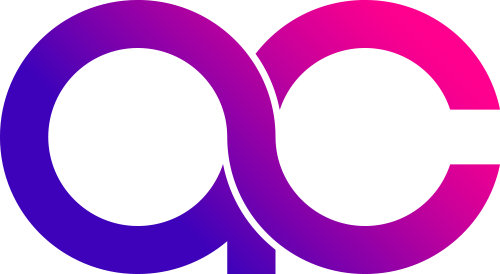B2B demand generation in 1,500 words

The elusive art of B2B demand generation. It’s like trying to coax a cat into a cold bath on fireworks night. Perhaps this explains why more than half of B2B organisations relegate it to the unloved shadows of marketing neglect.
A recent survey of marketers underscores this point, finding that only 38% prioritise demand generation in their marketing strategies while only half conscientiously measure the performance of their demand generation initiatives. Pretty shocking.
To grasp the essence of this problem, let’s delve into the overarching framework of B2B demand generation.
B2B Demand Generation 101: The basics
Demand gen can be split into two main facets: demand creation and demand capture.
At the crux of demand creation is the requirement to educate prospective buyers into a problem they don’t know they have — yet — demonstrating how your product or service solves that problem. This is achieved using channels like display advertising, email, and other mass-reach systems.
On the other hand, demand capture is a marketing strategy used to attract prospective buyers who are actively looking for a solution to a problem they’re already familiar with.
Demand creation is essentially the parent to demand capture, feeding it with a stream of potential buyers who are educated about a problem they are currently facing and actively seeking a solution.
About 5% of buyers fit the criteria for demand capture at any one time. The other 95% of buyers are, for the most part, inactive buyers who need an educative approach to raise awareness of a problem or need.
Because of this huge variance, not to mention the added return-on-investment that buyers in the demand capture phase can bring for a business, comms designed to capture demand are more personalised and better targeted. Channels like search, retargeting and ABM are often used to reach and entice buyers as they consider the solutions which exist to meet their current need(s).
Inbounded vs. outbound B2B demand generation
Demand gen as a whole reaches every corner of the B2B marketing spectrum, leaning on every available marketing channel to create and then capture buyer demand.
If we consider a linear journey in which the process begins with demand creation, it should always end with demand capture. Once the demand is captured our role as demand generation managers usually expires (with the exception of ongoing nurture campaigns designed to support buyer stickiness and brand loyalty).
At its foundational levels, B2B demand generation can be defined as:
Inbound demand generation
Usually includes any channel or strategy designed to bring people to your business. This includes SEO, PPC, social media, and content marketing. Inbound is arguably the toughest element of B2B demand generation because it takes considerable time (and money) to develop and deploy successfully. On the other side of that coin, inbound demand gen can be more cost effective than other strategies once it’s up and running.
Outbound demand generation
Uses interruption-based tactics to create and capture buyer demand using channels like email, direct mail, display, and events to ‘push’ messages to potential buyers as they go about their daily routine. The speed at which an outbound campaign can be deployed is much quicker than inbound due to its economies of scale and larger audience size. Outbound is typically used to target the 95% of buyers who are candidates for demand creation rather than capture.
B2B demand generation channels
Demand generation often gets misclassified as regular old marketing. The main difference is the way in which marketing activities are segmented into demand creation and demand capture to help build more effective strategies and understand audience needs more comprehensively. For example:
Search engine optimisation
Defined as an inbound demand gen channel, SEO drives traffic from specific search terms to a website. Depending on the nature of the search query and the intent behind it, the outcome of SEO can be to educate and inform or to drive leads. SEO performs well as either a standalone or multichannel strategy if users are searching for relevant search terms. In disruptive tech industries it can be hard to achieve returns from SEO because new technologies very often receive low search volumes.
An outbound demand gen strategy that every B2B marketer will be familiar with, email marketing can be used to create demand and capture it. It’s a highly flexible channel with many facets and sub-genres that marketers use to educate, inform, nurture and build relationships. According to some research, email provides the lowest customer acquisition costs of any channel due to its ease of deployment, personalisation, and speed to react to almost any situation.
Paid search
With a heavy focus on demand capture, paid search reaches buyers who are actively looking for a solution today. While it might sound easy to crack this channel simply by bidding on a few keywords, fierce competition coupled with a lack of buyer brand awareness often results in high customer acquisition costs.
Paid Display
Paid display covers a wide mix of activities ranging from display ads on Google and AdRoll to LinkedIn or Facebook ads. As a tool for creating demand, paid display excels. Its ability to educate buyers at scale and at low cost makes it exceptional for building awareness with large groups of buyers, but its ability to deliver results is often reliant on working with other channels.
In-person events
In-person events are the ultimate demand gen tool, providing a face-to-face platform for companies to reach buyers directly but without the added sales pressure. Events come in many different guises from seminars and conferences to exec round tables and lunches. They can be used to both create demand and capture it depending on the type of event and who’s attending.
Podcasts & webinars
Podcasts and webinars are diverse enough to cover every aspect of demand gen from creation to capture. The challenge with including these channels in any strategy is maintaining consistency and high-quality content over a long period of time — sometimes in excess of twelve months — before ROI is realised.
Account-based marketing
ABM is a powerful tool for both demand creation and capture. Using a one-to-many approach allows B2B marketers to drive demand creation with a specific target group of high-value buyers, while a one-to-few strategy can be a solid foundation for capture demand. Although complex to deploy, once ABM gets going the results can be fantastic. Learn more about B2B ABM strategies here.
The difference between B2B demand generation and lead generation
The goal of demand gen is broader and more holistic than that of lead generation. In essence, demand gen exists to build brand identity and reputation, often acting as the first touchpoint between brand and potential customer. Lead generation comes much later in the buying cycle, reaching buyers with low-funnel sales messages designed to turn browsing buyers into active ones.
Demand gen strategies encompass free non-gated content and educational messages aimed at buyers with little knowledge of the service/solution category. Lead gen is different, usually favouring gated content and messaging designed to appeal to the solution-educated buyer who knows and understands the category.
But why would an organisation focus on both demand gen and lead gen if the former doesn’t bring in paying customers? There are two reasons:
- Demand gen makes prospects aware that a solution exists to a problem they didn’t necessarily know was significant. For example, the engineering company that didn’t know it would save £millions by replacing manually collated engineering data with robot process automation, or the doctor’s surgery that didn’t know it could save £100k each year by replacing face-to-face blood pressure monitoring with wearable devices and software.
- Demand gen creates brand awareness. And that’s important because years of research shows that consistent investment in brand awareness drives long-term sales growth that lead gen cannot achieve on its own.
Using content to drive B2B demand generation
From the glistening visuals of a well-executed retargeting campaign to the data-driven insights of an industry whitepaper, good content is arguably the foundation of every successful demand generation strategy.
Content comes in many forms but according to the latest research from Demand Gen Report, B2B buyers gravitate towards quick-hitting interactive assets like infographics, blog posts, whitepapers and e-books. Even three years post-pandemic, B2B buyers still prefer digital events and webinars over in-person conferences.
As far as content topics are concerned, most B2B buyers favour content that’s packed with shareable stats and facts over story-based or influential content, and LinkedIn and email are the mediums of choice for content consumption.
In the B2B space, good content drives everything from brand awareness to demand capture and lead generation. It’s the glue holding everything together, acting as both a marketing tool and a relationship building device. Today’s tech-savvy B2B buyers say that content helps to dilute the sales message while adding business value.
What’s next for B2B demand generation
New technology is driving advancements in B2B demand gen like never before.
Mass personalisation means that we can already create personalised content at scale. Advanced intent data tells us when a prospect is ready to buy (sometimes before the prospect even knows themself). And buyer expectations are shifting as a result of improved content offerings and more relevant messaging driven from the explosion of account-based marketing.
In 2024, B2B marketers will take things to the next level. There will be a shift to data-driven thought-leadership content. Marketing technology and AI will continue to drive efficiencies in the way marketers create personalised campaign messages. Improvements to existing technologies like chatbots will help demand generation outperform every previous year.
Hire me as your B2B marketing consultant
Mastering the art of B2B demand gen can be a complex and time consuming affair.
If you want to get some of that time back, consider contacting me to discuss your next project. I’ve worked with some of the most exciting and disruptive brands in B2B technology, boasting almost two decades of experience helping B2B companies drive buyer demand in new and innovative ways.
